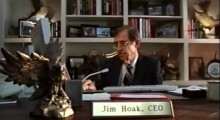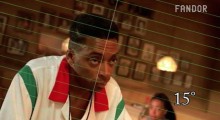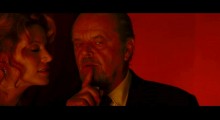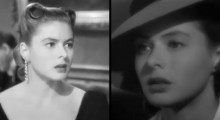Filmmaker Videos
-
Watch: “Capturing the Moment: In Search of Adequate Images”

A bit of a rant, Stephen Murphy’s video essay “Capturing the Moment: In Search of Adequate Images” springboards off a diatribe against the epidemic of smartphones at concerts to riff off of Werner Herzog’s long-ago warning that we as a society need to find adequate images. What are these adequate images, and how do we define them? Murphy has some thoughts, and some high praise for A Girl Walks Home Alone at Night as well.
-
Watch: $5.15/Hr., Richard Linklater’s Rejected HBO Pilot From 2004

HBO is normally very serious about making sure no commissioned and rejected pilots ever make it into public view, so I’m not sure how Richard Linklater’s rejected 2004 pilot made it to Vimeo or how long it’ll stay there. $5.15/Hr. was, per its title, intended to be an immersion into the lives of underpaid restaurant employees slacking around Austin. I recall seeing an uncharacteristically acerbic Linklater presenting the pilot at SXSW in 2004, with the words “You know how they say it’s not TV, it’s HBO? It’s TV.” If only television had been so good in those days as it reportedly […]
-
Watch: Tony Zhou’s “Vancouver Never Plays Itself”

Vancouver is the third-biggest filmmaking city in North America, and yet it’s always a stand-in for somewhere else: New York, Shanghai and San Francisco are all possibilities. What does it mean to be “ubiquitous and invisible” at the same time? In his latest video essay, Tony Zhou examines the many tricks used to disguise the city (from planting USA Today newspaper stands everywhere to making sure the camera looks down outside, lest it accidentally capture mountains that don’t belong to the city), then issues a stirring call for Vancouver to, for once, play itself.
-
Trailer Watch: Celia Rowlson-Hall’s MA

Here’s your first look at MA, the debut feature from one of our most recent 25 New Faces, Celia Rowlson-Hall. The dialogue free film just received its world premiere in the Venice Days section of the Venice Film Festival, and I was fortunate enough to catch a work-in-progress screening back in April at Tribeca. Be sure to keep an eye out for it on the circuit in the coming year.
-
Trailer Watch: Josh Mond’s James White

Here’s the first trailer for Josh Mond’s Sundance winner James White, starring Cynthia Nixon and Christopher Abbott as a cancer patient and her alcoholic son. As his mother leans on the eponymous character for emotional stability, James spirals into self-destructive pattern, in what’s a tightly controlled, affecting character study. The Film Arcade will open James White on November 13, 2015.
-
Errol Morris Asks Donald Trump about the Meaning of Citizen Kane

In this interview clip from a shelved Errol Morris project, businessman and now presidential candidate Donald Trump muses on the meanings of Orson Welles’ classic film, Citizen Kane. Trump doesn’t diverge from critical orthodoxy about the film, but it’s still interesting to hear him take away the standard lesson that money isn’t everything. Still, as Jason Kottke notes, Trump can’t just help himself from throwing in conversation-ending misogynistic aside. From Morris’s site: The Movie Movie, an aborted project, is based on the idea of taking Donald Trump, Mikhail Gorbachev and others and putting them in the movies they most admire. […]
-
Watch: Dutch Angles, Measured by Degree

In his latest video essay, the prolific Jacob T. Swinney pulls off a nifty trick in assembling a variety of dutch angles from film history. Instead of just stringing them together, he measures the angle of the camera by degree, quantifying extremity of effect in numbers.
-
Watch: Shapes of Rage in The Birds and The Brood

Want to start your day by seeing some enlighteningly disturbing parallels between The Birds and The Brood? This video by Cristina Álvarez López and Adrian Martin connects the dots between late Hitchcock and early Cronenberg; over at MUBI, there’s an essay to go along with it. If you’re familiar with both films, you’ll know this is probably not something to watch first thing in the morning — it’s strong fare.
-
Watch: Red Lighting in the Films of Martin Scorsese

A new site called Film Scalpel is devoted to not just the production of video essays, but also understanding their grammar and exemplary practitioners. Among their first handful of videos are four takes on different motifs in the work of Martin Scorsese, with a thoughtful look at his use of red as it historically relates to tinting and black and white compositions. Check that out above, and read below for some context. Just as silent movies were rarely silent, black-and-white films were not often simply black and white. In the silent era, the techniques of tinting and toning were commonly used to add a dash of […]
-
Watch: A Centenary Tribute to Ingrid Bergman

In honor of Ingrid Bergman’s centenary, Criterion has posted this tribute video cut together by Jonathan Keogh. For more reading, head over to Keyframe Daily, where David Hudson has rounded up some recent writing on the actress and the many retros of her films currently taking place.










